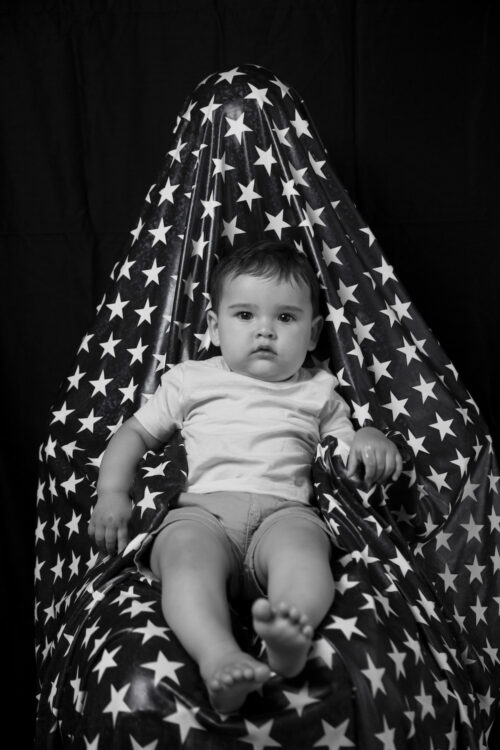
Tip of My Tongue: In Conversation with Emilio Rojas (Online)
April 8 @ 7:00 pm – 8:30 pm
The Griffin Museum of Photography is delighted to host an evening artist talk with Emilio Rojas—a visual artist, activist, and educator—in celebration of his virtual exhibition in the Griffin Museum Critic’s Pick Gallery, featuring his ongoing series of video-portraits, m(Other)s.
At the Tip Of my Tongue, is a performative lecture by Mexican artist Emilio Rojas. The Tip of the tongue (also known as TOT or lethologica) is the phenomenon of failing to retrieve a word or term from memory, combined with partial recollection and the feeling that retrieval is imminent. The phenomenon’s name comes from the saying, “It’s on the tip of my tongue.” This lecture honors embodied memory, and reconsiders the Rojas’s practice in relation to the this instrumental organ of human experience, queer desire, taste, translation, trauma, migration and speech. This expression also places memory outside of the brain, at the tip of the tongue, like if the words were fired by our neurons ended stuck between our memory and the utterance or recollection. In Chinese medicine the tip of the tongue is also connected to the heart. This makes us question: How long would it take you to forget someone that you loved, hurt you, or someone you lost?
About Emilio Rojas –
Emilio Rojas (Mexico City, 1988) is a multidisciplinary Mexican artist working primarily with the body in performance, using video, photography, installation, public interventions, and sculpture. As a queer, Latinx immigrant with Indigenous heritage, it is essential to his practice to engage in the postcolonial ethical imperative to uncover, investigate, and make visible and audible undervalued or disparaged sites of knowledge, narratives, and individuals. He utilizes his body in a political and critical way, as an instrument to unearth removed traumas, embodied forms of decolonization, migration, and poetics of space. His research-based practice is heavily influenced by queer and feminist archives, border politics, botanical colonialism, and defaced monuments.
His work has been exhibited in exhibitions and festivals in the U.S., Mexico, Canada, Japan, Austria, England, Greece, France, Germany, Italy, Spain, Holland, Colombia, and Australia, as well as institutions such as The Art Institute and the Museum of Contemporary Art in Chicago, Ex-Teresa Arte Actual Museum and Museo Tamayo in Mexico City, The Vancouver Art Gallery, The Surrey Art Gallery, The DePaul Art Museum, SECCA, the Syracuse University Museum of Art, The Johnson Museum of Art, The Park Avenue Armory, and the Botin Foundation.He holds an M.F.A. in Performance from The School of the Art Institute of Chicago and a B.F.A. in Film from Emily Carr University in Vancouver, Canada.
From 2019-2022 Rojas was a Visiting Artist in Residency in the Theater and Performance Department at Bard College in New York. He has taught in the M.F.A. programs at Parsons the New School and the low-res M.F.A. programs at PNCA in Portland, Oregon, and University of the Arts, in Philadelphia. From Fall 2022 to the Fall of 2024 he was a full-time visiting critic at Cornell University in the School of Art, Architecture and Planning.

The ongoing series of video portraits, m(Other)s, by artist Emilio Rojas, references the 19th-century “hidden mother” photographs. The Victorian genre of photography captured infants sitting on their mothers’ laps, who were unceremoniously covered with blankets—designating them as apparatuses to prop up the children. Long exposure times for early photography required the children to sit still, often with failed results and slightly blurred images. The resulting photographs featured ghostly children perched atop uncanny hidden figures.
Rojas’ video portraits cite this early form of photography while reimagining it with Latinx immigrant and undocumented mothers and their children, derogatorily referred to as “anchor babies.” A controversial term used in xenophobic rhetoric to refer to a child born to a non-citizen mother in a country that has birthright citizenship, or jus soli from the 14th Amendment, this child supposedly aids the mother to gain legal residency. In each site the series is realized, Rojas films and compensates local immigrant and undocumented mothers made invisible underneath a star-spangled banner (with more than 50 stars), holding their children.
The mothers’ narratives—anonymized and in their mother tongue of Spanish—share their stories of sacrifice and resilience, but also illuminate their maternal labor rendered invisible, or “othered,” by immigration legislation and xenophobia. For this new iteration at the Johnson Museum, Rojas has paired m(Other)s with prehispanic clay figurines which originate from Central and South America, and are part of the collection of the museum. These figurines have also been displaced from their places of origin and have followed a similar migration pattern than the mothers portrayed in the videos.
Griffin Member Admission
FREE to Members
All sales are final on products purchased through the Griffin Museum. Participant cancellation of a program/lecture/class will result in a full refund only if notice of cancellation is given at least 2 weeks before the date of the event.










